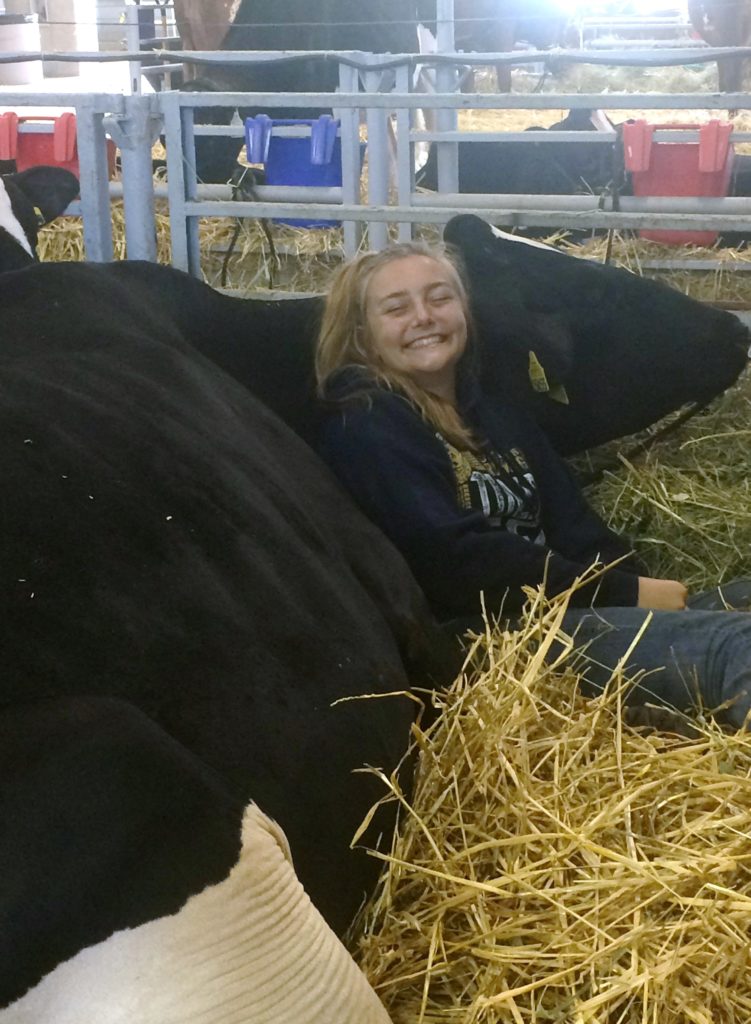To show dairy cattle it takes patience, practice, and hard work. It starts by finding or breeding the most ideal show cow or heifer, based off a nationally used scorecard. For milk cows, the breakdown is: Frame 15%, Dairy Strength 25%, Rear Feet and Legs 20%, Udder 40%. The judge places the class of cows according to how good her attributes are, based off of the scorecard.
There are always opportunities to buy a heifer or cow, whether it is at a show sale, or from a private party. It’s helpful for new buyers to consult with experienced people in the show business. This may include other showmen, Ag teachers, or anyone involved with livestock fairs and shows. Typically beginners would buy a calf or a heifer to start off with, because they are smaller and easier to work with and handle, if you are not experienced.
As experience and knowledge advance, it will become clearer to the showman what they can handle. At the Tulare County Fair, there is a replacement heifer program in which exhibitors have the opportunity to sell their project at approximately two years old. Additionally, breeding stock animals would be typically owned by the exhibitor for a longer period of time and not sold in the action. Male calves are not shown in most shows – this is for safety reasons.
http://www.ourvalleyvoice.com/wp-admin/media-upload.php?post_id=22050&type=image&TB_iframe=1
Once you find a cow – comes the hard part – halter breaking. This can be done many different ways, but there is one goal in the end – get the cow to walk on a halter and lead. Once you can control the cow enough to walk her short distances, you should wash her as often as possible. Washing cows helps with many things, including calming them down, and stimulating more hair growth that will give them a sleeker, shinier look when you clip them.
The next step to get her ready for show is clipping and fitting her. Clipping is like getting a haircut, but for cows and includes their whole body. Fitting is like styling your hair. You blow the cow’s topline, the hair that is on the cow’s back, which is the only long hair left on the cow’s body, with a blowdryer, and then you keep it up with sprays. Usually it is ideal to clip your cow as close to the show as you can, so that it is still a close cut which makes her look cleaner and sharper.
On show day it is important to keep yourself and your cow as clean as possible, which is harder than it sounds!
When you are in the show ring it is important to keep good eye contact with the judge, walk in sync with your cow, and keep your cow under control.
Showing at the Western Classic Dairy Show is different from the county fair because there are people from across the State of California participating and there is a wider range of ages showing.
The Western Classic is much more competitive than the county fair.
At the Western Classic there is also a judging competition.
This show is only for dairy cattle, unlike the county fair that has multiple species. Overall the Western Classic is a great experience to get to know more people in the industry and see a lot of great cows and genetics!

